Jammu & Kashmir Switch to Hindi
The Waqf Bill
Why in News?
Recently, at the ‘Budget Pe Charcha’ event in Srinagar, the Union Minister of Parliamentary Affairs stated that the proposed amendments in the Waqf Bill aimed to benefit poor Muslims rather than seize Waqf property.
Key Points
- Support for the Waqf Bill:
- He mentioned that several Muslim MPs have also backed the Bill, with many expressing private approval.
- Despite opposition from certain political parties, he highlighted that his ministry had received feedback from the Muslim community, including women.
- The amendments aim to enhance transparency in Waqf property management, ultimately serving the best interests of the community.
- Visit to Dargah Hazratbal Shrine:
- The Minister visited the Dargah Hazratbal shrine in Srinagar and reviewed ongoing development works.
- The Minister praised the J&K Waqf Board’s development initiatives, calling them a model for religious site management across India.
- Discussion on Union Budget 2025:
- He also chaired a discussion on the Union Budget 2025, engaging with local business leaders, industry representatives, and community members.
- The discussion saw participation from stakeholders across various sectors, including the Hotel Association, Houseboat Owners Association, Industries & Commerce Association, Tour & Travel Association, Saffron Growers Association, Shawl Weavers Association, Fruit Growers Association, and Farmers Association.
- The issues discussed included the implementation of the Minimum Wages Act, the revival of Public Sector Undertakings (PSUs), rehabilitation of houseboat owners, and conservation of Kashmir’s wetlands.
- Commitment to J&K’s Economy:
- He acknowledged the significance of tourism and handicrafts in J&K’s economy and assured policy support for these sectors.
- He emphasized sustainable tourism and environmental conservation, particularly in preserving wetlands and rehabilitating houseboats.
- He reiterated the government’s commitment to promoting eco-friendly tourism while safeguarding local livelihoods.
Waqf Act, 1995
- Background:
- The Waqf act was first passed by Parliament in 1954.
- It was later repealed, and a new Waqf Act was passed in 1995, which gave more powers to Waqf Boards.
- In 2013, the Act was further amended to grant the Waqf Board extensive powers to designate property as 'Waqf Property.'
- Waqf:
- It is the permanent dedication of movable or immovable properties for religious, pious or charitable purposes as recognised by Muslim law.
- It implies the endowment of property, whether movable or immovable, tangible or intangible, to God by a Muslim, under the premise that the transfer will benefit the needy.
- The proceeds from a Waqf typically fund educational institutions, graveyards, mosques and shelter homes.
- Waqfs in India are regulated by the Waqf act, 1995.
- Waqf Board:
- A Waqf board is a legal entity capable of acquiring, holding and transferring property. It can sue and be sued in court.
- It administers Waqf properties, recovers lost properties and sanctions the transfer of immovable Waqf properties through sale, gift, mortgage, exchange, or lease, with at least two-thirds of the board members voting in favour of the transaction.
- The Central Waqf Council (CWC), established in 1964, oversees and advises state level Waqf Boards across India.
- Waqf Properties:
- The Waqf board is said to be the third-largest landholder in India after the Railways and the Defence department.
- Currently, there are 8,72,292 registered Waqf properties spread across 8 lakh acres. These properties generate Rs 200 crore in revenue.
- Once a property is designated as a Waqf, it becomes non-transferable and is detained perpetually as a charitable act toward God, essentially transferring ownership to God.
- The Waqf board is said to be the third-largest landholder in India after the Railways and the Defence department.
Jammu & Kashmir Switch to Hindi
Asian Water Bird Census
Why in News?
The Department of Wildlife Protection, in collaboration with the Wular Conservation and Management Authority (WUCMA), is going to conduct the Asian Waterbird Census 2025 in Kashmir.
- This annual initiative helps estimate the population of migratory birds visiting Kashmir’s wetlands and assess the ecological health of these vital habitats.
Key Points
- Significance of Kashmir’s Wetlands:
- The Central Asian Flyway was highlighted as a major migration route used by birds traveling from Russia, Siberia, Europe, and China.
- The migratory patterns of birds arriving in Kashmir’s wetlands between November and March.
- The importance of Kashmir’s wetlands as critical stopover points for migratory birds.
- Census as a Scientific Exercise:
- The census is described as a crucial scientific initiative. Bird migration serves as a key indicator of wetland health.
- Over the past two years, officials have recorded more than 12 lakh migratory birds in Kashmir’s wetlands, reaffirming their global ecological significance.
- Coverage of Key Wetlands:
- The Asian Waterbird Census 2025 will include 25 key wetlands.
- It will cover four Ramsar sites, Hokersar, Haigam, Shallabugh, and Wular Lake—each serving as a vital habitat for thousands of migratory birds.
- Execution of the Census:
- Trained personnel from the Wildlife Department, WUCMA, Forest Protection Force, and Forest Department will conduct the census under strict supervision.
- Avian experts will analyze the collected data after the field survey.
- They will compile a comprehensive report on species diversity, population trends, and wetland health.
- This report will help shape future conservation policies and wetland management strategies.
The Asian Waterbird Census
- About:
- It is a citizen-science programme supporting conservation and management of wetlands and waterbirds worldwide.
- AWC is part of the global International Waterbird Census (IWC) coordinated by Wetlands International.
- AWC runs in parallel with other regional programmes of the IWC in Africa, Europe, West Asia, the Neotropics and the Caribbean.
- It is a citizen-science programme supporting conservation and management of wetlands and waterbirds worldwide.
- AWC in India:
- It was initiated in the Indian subcontinent in 1987 and since then has grown rapidly to cover major regions of Asia, from Afghanistan eastwards to Japan, Southeast Asia and Australasia.
- In India, AWC is jointly coordinated by the Bombay Natural History Society (BNHS) and Wetlands International.
- Significance:
- It gives an idea of the birds at the wetland and the health of the wetland; the more the waterbirds, the more suitable the wetland is.
- It helps in better implementation of the Convention on Migratory Species (CMS) and the Convention on Biological Diversity‘s (CBD).
The Central Asian Flyway (CAF)
- It is a migration route, covering over 30 countries, for different waterbirds linking their northernmost breeding grounds in Russia (Siberia) to the southernmost non-breeding (wintering) grounds in West and South Asia, the Maldives and British Indian Ocean Territory.
- CAF is among the nine flyways in the world and three of the nine flyways that pass through the Indian Subcontinent. The other two are:
- East Asian Australasian Flyway (EAAF) and Asian East African Flyway (AEAF).
- India has a strategic role in the flyway, as it provides critical stopover sites to over 90% of the bird species known to use this migratory route.
- Flyways are the area used by a group of birds during their annual cycle which includes their breeding areas, stop over areas and wintering areas.
Jammu & Kashmir Switch to Hindi
Review Meeting on New Criminal Laws Implementation in J&K
Why in News?
Recently, the Union Home Minister chaired a review meeting in New Delhi to assess the implementation of three new criminal laws in Jammu and Kashmir.
- The Lieutenant Governor and Chief Minister of the Union territory attended the meeting.
Key Points
- Key Areas of Review:
- The meeting evaluated the implementation and current status of various new provisions related to:
- Police reforms
- Prison management
- Judicial processes
- Prosecution and forensic advancements
- Senior officials from the Ministry of Home Affairs (MHA), including the Union Home Secretary, Chief Secretary, Director General of Police (DGP) of Jammu and Kashmir, Director General of the Bureau of Police Research and Development (BPRD), and Director General of the National Crime Records Bureau (NCRB) participated in the discussions.
- The meeting evaluated the implementation and current status of various new provisions related to:
- Implementation Deadline:
- The Union Minister directed the Jammu and Kashmir administration to ensure full implementation of the three new criminal laws by April 2025.
- He emphasized optimal use of technology to facilitate speedy justice under the new legal framework.
- He also called for the urgent implementation of the ‘Trial in Absentia’ provision in the union territory.
- Strengthening Police Accountability:
- He directed the administration to hold police officers accountable for expediting charge sheet filings.
- He instructed that every police station in Jammu and Kashmir should maximize the use of the National Automated Fingerprint Identification System (NAFIS).
- He mandated 100% training of investigating officers on the new legal provisions.
- Monitoring Provisions on Terrorism and Organized Crime:
- The Union Minister emphasized that decisions regarding terrorism and organized crime cases should undergo thorough scrutiny at the Superintendent of Police (SP) level.
- He stressed the need for strict monitoring to prevent misuse of the provisions under the new laws.
- Periodic Review of Implementation:
- He directed that the progress of implementation should be reviewed at three levels:
- Weekly by the Director General of Police (DGP)
- Fortnightly by the Chief Secretary
- Monthly by the Chief Minister
- He directed that the progress of implementation should be reviewed at three levels:
National Automated Fingerprint Identification System (NAFIS)
- NAFIS, a nationwide database managed by National Crime Records Bureau (NCRB), swiftly stores crime-related fingerprints and assigns a unique 10-digit National Fingerprint Number (NFN) to apprehended criminals within 24 hours.
- NFN remains with the offender for life, connecting various crimes under different FIRs to the same ID.
- ID comprises state code (first two digits) and sequential number, specific to states.
- NAFIS swiftly identifies persons of interest, linking their names to warrants, warnings, and related criminal data in police reference systems.
- It operates from New Delhi's Central Fingerprint Bureau(CFPB).
- It aims to collect fingerprint data of criminals from all Indian states and Union Territories, offering a web-based platform for real-time uploading, tracking, and retrieval of information by law enforcement agencies.
Haryana Switch to Hindi
Haryana to Launch E-Libraries
Why in News?
The Haryana government is introducing e-libraries in government colleges across Gurugram to improve digital education.
Key Points
- Benefits of E-Libraries:
- Students will gain access to thousands of digital books, research papers, journals, and lectures.
- They can browse and download study materials using unique login credentials on their phones or laptops.
- This initiative eliminates the limitation of physical books and allows multiple students to use the same resource simultaneously.
- Success of E-Library Model at Gurugram University:
- Gurugram University (GU) has already implemented the e-library model with great success. GU students currently have access to:
- 17,000 e-books
- 8,800 e-journals
- 130,000 e-lectures
- 748,000 theses
- 2,200 reports
- 2,600 expert talks
- Gurugram University (GU) has already implemented the e-library model with great success. GU students currently have access to:
- Step Toward Modern Education:
- The District Elementary Education Officer emphasized that e-libraries will help students stay updated with the latest academic research and global studies.
- This initiative is described as a crucial step in improving higher education in Haryana.
Uttarakhand Switch to Hindi
Grants for Rural Local Bodies in Uttarakhand
Why in News?
The Union Government has released the Fifteenth Finance Commission (XV FC) Grants for Rural Local Bodies in Punjab, Uttarakhand, and Chhattisgarh during the Financial Year 2024–25.
- These grants strengthen grassroots democracy by supporting Panchayati Raj Institutions (PRIs) and Rural Local Bodies (RLBs).
Key Points
- XV FC Grants:
- The government has released the 1st installment of Untied Grants for FY 2024–25, amounting to Rs. 93.9643 crore for Uttarakhand.
- The government has released the 1st installment of Untied Grants amounting to Rs 225.1707 crore for Rural Local Bodies in Punjab.
- The government has disbursed the 2nd installment of Untied Grants for FY 2024–25 amounting to Rs 237.1393 crore for Chhattisgarh.
- Process of Grant Allocation:
- The Ministry of Panchayati Raj and the Ministry of Jal Shakti (Department of Drinking Water and Sanitation) recommend XV FC Grants for Rural Local Bodies.
- The Ministry of Finance releases these grants in two installments per financial year.
- Utilization of XV FC Grants:
- Untied Grants:
- PRIs and RLBs can utilize these grants for location-specific felt needs under the 29 subjects listed in the Eleventh Schedule of the Constitution.
- These funds cannot be used for salaries and establishment costs.
- Tied Grants:
- These funds must be used for basic services, including:
- Sanitation and maintenance of Open Defecation-Free (ODF) status, including waste management and fecal sludge treatment.
- Drinking water supply, rainwater harvesting, and water recycling.
- These funds must be used for basic services, including:
- Untied Grants:
Finance Commission
- It is a constitutional body that determines the method and formula for distributing the tax proceeds between the Centre and states and among the states as per the constitutional arrangement and present requirements.
- Under Article 280 of the Constitution, the President of India is required to constitute a Finance Commission at an interval of five years or earlier.
- The 1st FC was set up in 1951 and there have been fifteen so far.
- The 15th FC headed by N.K. Singh was constituted by the President of India on 27th November 2017, against the backdrop of the abolition of the Planning Commission and the introduction of the Goods and Services Tax (GST).
- In November 2019, the Union Cabinet approved the 15th FC to submit its first report for the first fiscal year 2020-21 and to extend its tenure to provide for the presentation of the final report covering Financial Years 2021-22 to 2025-26 by 30th October, 2020.
Uttar Pradesh Switch to Hindi
Exhibition on Dyes, Chemicals and Handicrafts
Why in News?
Recently, an exhibition on handicrafts, dyes and chemicals and garment technology was organised at India Expo Centre and Mart in Greater Noida .
Key Points
- About the event:
- The exhibition was organized under Bharat Tex 2025 , while the mega event was held at Bharat Mandapam , New Delhi from 14th to 17th February 2025 .
- This exhibition will promote overall growth and competitiveness of the industries through new business opportunities, performance excellence, sustainability and innovation.
- The events were centered on four major themes:
- Garment Technology Expo (GTE) 2025 - Showcasing cutting-edge machinery, processes and solutions.
- Dyechem World Bharat Tex 2025 - Exhibition focused on nature friendly dyes, chemicals and raw materials.
- Handmade Products Exhibition - Exhibition of handmade textiles.
- India Sourcing Conclave (ISC) - Conference organised by Sourcing Consultants Association.
Uttar Pradesh Switch to Hindi
17th Foundation Day of NSSTA
Why in News?
National Statistical System Training Academy (NSSTA) celebrated its 17th Foundation Day on 13th February 2025.
Key Points
- Venue:
- The day was celebrated at Mahalanobis Auditorium, NSSTA, Greater Noida, Uttar Pradesh.
- Theme:
- Its theme was “Empowering Governance through Statistical Excellence – 17 Years of Capacity Building and Collaboration” .
- Objective:
- Equip statisticians and field officers with advanced methodologies, ensure high-quality data collection, and support evidence-based policy making.
.jpg)
National Statistical System Training Academy (NSSTA)
- Introduction:
- Located in Greater Noida, Uttar Pradesh, this institute is an important training institute under the Ministry of Statistics and Programme Implementation.
- It was established in January 2009.
- Objective:
- Its main objective is to strengthen the statistical system in India and promote statistical capacity building.
- Under this, training is given to central and state government officials, researchers, academicians and other concerned persons.
- Importance:
- Makes government officials and statisticians skilled in data collection and analysis.
- Familiarizes trainees with the latest techniques and methods in the field of statistics at national and international level.
- Helpful in encouraging new research related to statistical science and ensuring effective use of data in government schemes.
- Promotes statistical training and research in collaboration with various national and international organisations.
Uttar Pradesh Switch to Hindi
Action on Misleading Video of Maha Kumbh
Why in News?
Uttar Pradesh Police has taken strict action against the misleading video being shared on social media regarding Mahakumbh 2025.
Key Points
- About the issue:
- Action has been taken against 53 social media accounts in the last one month.
- Through these accounts, false information and misleading videos related to Maha Kumbh were posted.
- On the instructions of the Chief Minister, the police and cyber agencies are keeping an eye on these fake news, so that such misleading information can be stopped from spreading.
- https://drishti.xyz/uppcs-eng-fn-web-bannerEffects on people:
- Due to the videos an attempt was made to spread false and misleading information.
- The effect of this misinformation creates confusion and fear in the minds of people. An atmosphere of tension and insecurity is created in the society.
.jpg)
Laws Related to Social Media and Fake News
- It is noteworthy that social media platforms in India already fall under the purview of the Information Technology (IT) Act, 2008.
- Although there is no specific law to stop fake news in India. But there are many organizations in India, which work in this regard.
- The Press Council of India is one such regulatory body that can warn newspapers, news agencies and their editors if it is found that they have violated the principles of journalism.
- The News Broadcasters Association (NBA) represents private television news and current affairs broadcasters and investigates complaints against them.
- The Broadcasting Content Complaints Council (BCCC) accepts and investigates complaints against TV broadcasters for objectionable TV content and fake news.
Rajasthan Switch to Hindi
Review of Mega Infrastructure Projects
Why in News?
The Department for Promotion of Industry and Internal Trade (DPIIT) reviewed the key issues affecting mega infrastructure projects in the states of Gujarat and Rajasthan.
Key Points
- The review focused on expediting resolution of the issue through inter-ministerial and state coordination facilitated by the Project Monitoring Group (PMG).
- The major topics are:
- DPIIT reviewed 21 issues related to 14 critical infrastructure projects.
- Significant emphasis was given to the transmission projects of Khavda Renewable Energy Park in Gujarat, which is expected to generate 81 billion units of electricity annually.
- Reliance Jio's 5G/4G expansion project was also reviewed, which offers benefits such as faster speeds, lower latency and wider coverage.
Department for Promotion of Industry and Internal Trade (DPIIT)
- About:
- DPIIT was established in the year 1995 and the Department of Industrial Development was merged into it in the year 2000.
- It came into existence in its current form on 27 January 2019, when the erstwhile Department of Industrial Policy and Promotion was renamed as the Department for Promotion of Industry and Internal Trade (DPIIT).
- Objective:
- The Department is responsible for formulation and implementation of promotional and developmental measures for the growth of the industrial sector keeping in view the national priorities and socio-economic objectives.
- It is also responsible for facilitating and increasing foreign direct investment (FDI) inflows into the country.
- It functions under the Ministry of Commerce and Industry, Government of India.
Rajasthan Switch to Hindi
All India State Water Ministers Conference
Why in News?
The 2nd All India State Water Ministers Conference was held in Udaipur, Rajasthan on 18th and 19th February 2025.
Key Points
- About the conference:
- It was organized under the aegis of the Ministry of Jal Shakti
- This conference is an important step towards adopting effective water management measures, addressing the complexities of the water sector and realizing the vision of water security.
- Subject:
- The theme of the conference was “India@2047 – Water Secure Nation”, which is in line with the Prime Minister’s vision of a developed, water-secure India.
- Objective:
- Its main objective is to strengthen collaboration with states and stakeholder ministries while working towards a shared vision for sustainable and integrated water resources management.
- Major Focused Topics:
- Strengthening water governance
- Augmentation of water storage infrastructure and supply
- Water distribution services with a focus on potable water
- Water distribution services focusing on irrigation and other uses
- Demand management and water use efficiency
- Integrated River and Coastal Management
Jal Jeevan Mission
- Introduction:
- Launched in the year 2019, this mission envisages supply of 55 litres of water per capita per day to every rural household through functional household tap connection (FHTC) by the year 2024.
- Jal Jeevan Mission aims to become a mass movement for drinking water, making it everyone's priority.
- It comes under the Ministry of Jal Shakti.
- Goal:
- The mission aims to ensure the functionality of existing water supply systems and water connections, water quality monitoring and testing as well as sustainable agriculture.
- It ensures conjunctive use of conserved water. It also ensures augmentation of drinking water source, drinking water supply system, grey water treatment and reuse.
- Features:
- Jal Jeevan Mission focuses on integrated demand and supply side management of water at the local level.
- Creation of local infrastructure for source sustainability measures with essential elements such as rainwater harvesting, groundwater recharge and management of domestic wastewater for reuse are taken up in convergence with other Government programmes/schemes.
- The mission is based on a community approach to water and includes extensive information, education and communication as key components of the mission.

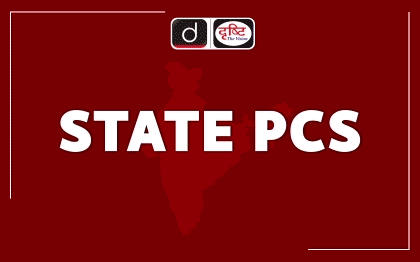
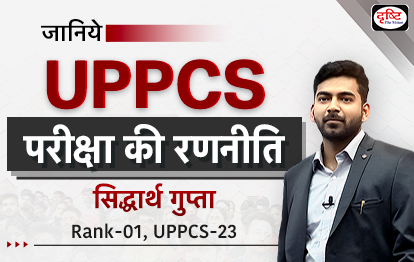

%20MPPCS%202025%20Desktop%20E.jpg)
%20MPPCS%202025%20Mobile%20E%20(1).jpg)

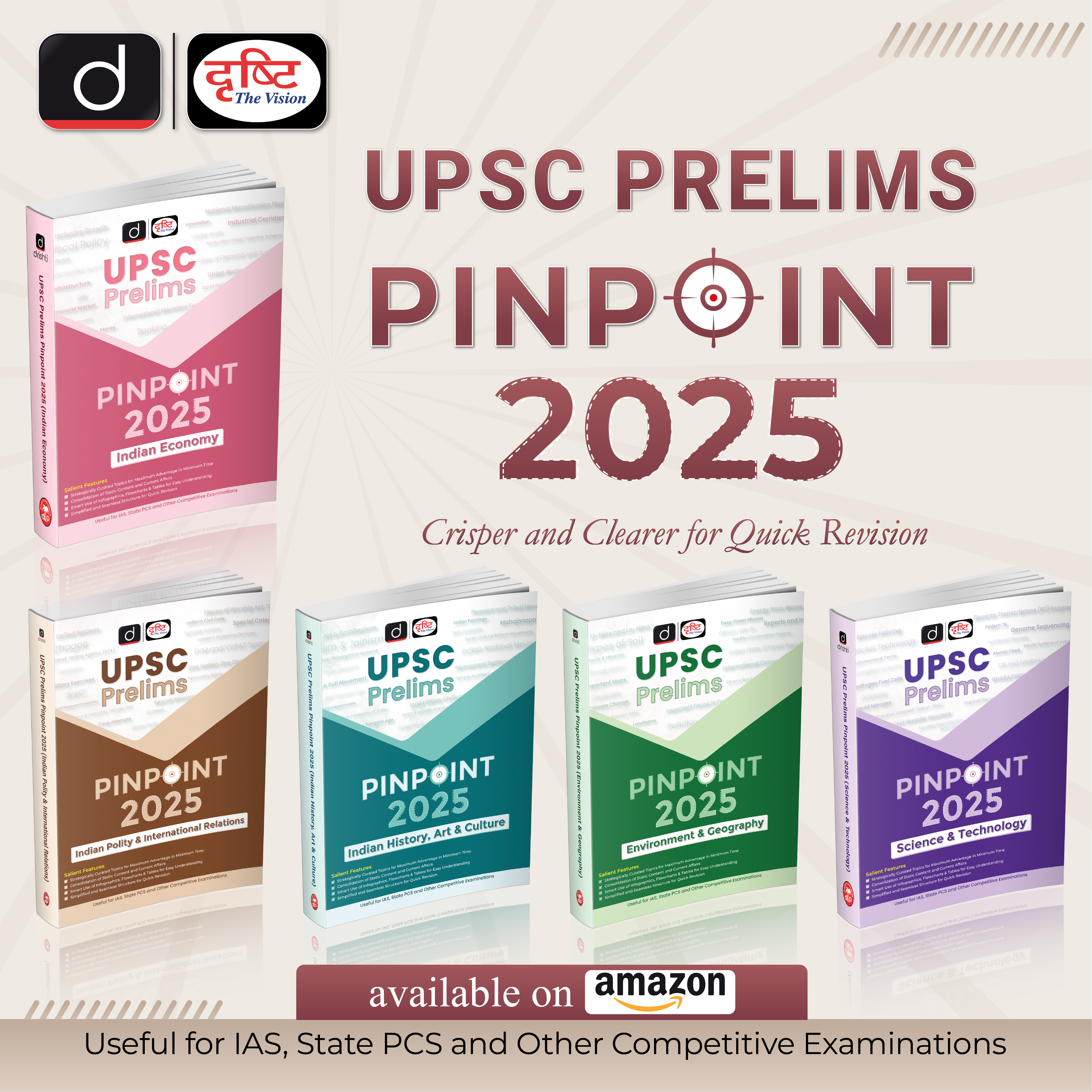







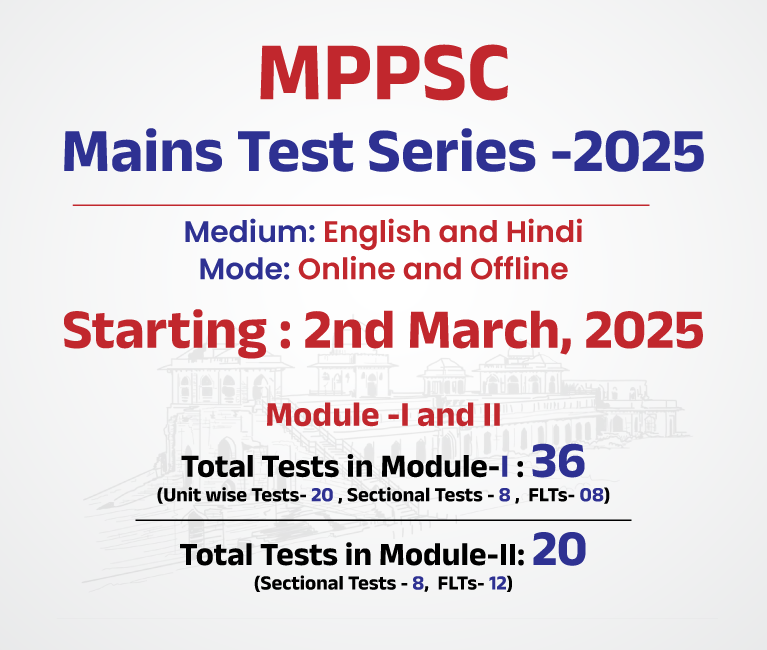
.png)
.png)

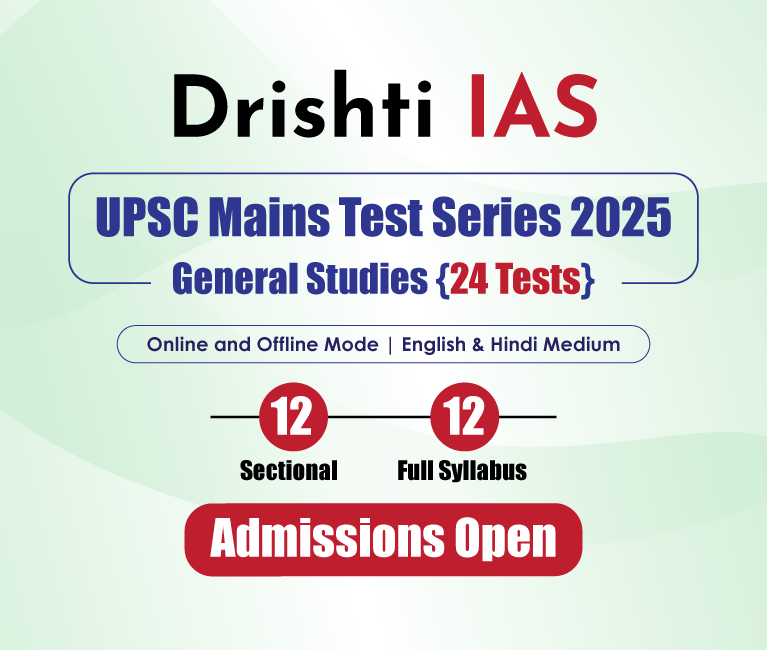

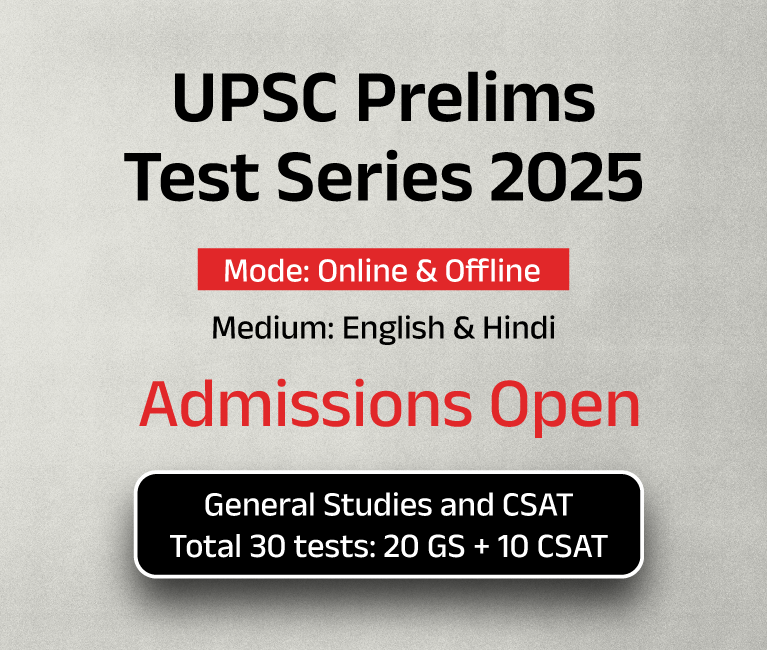

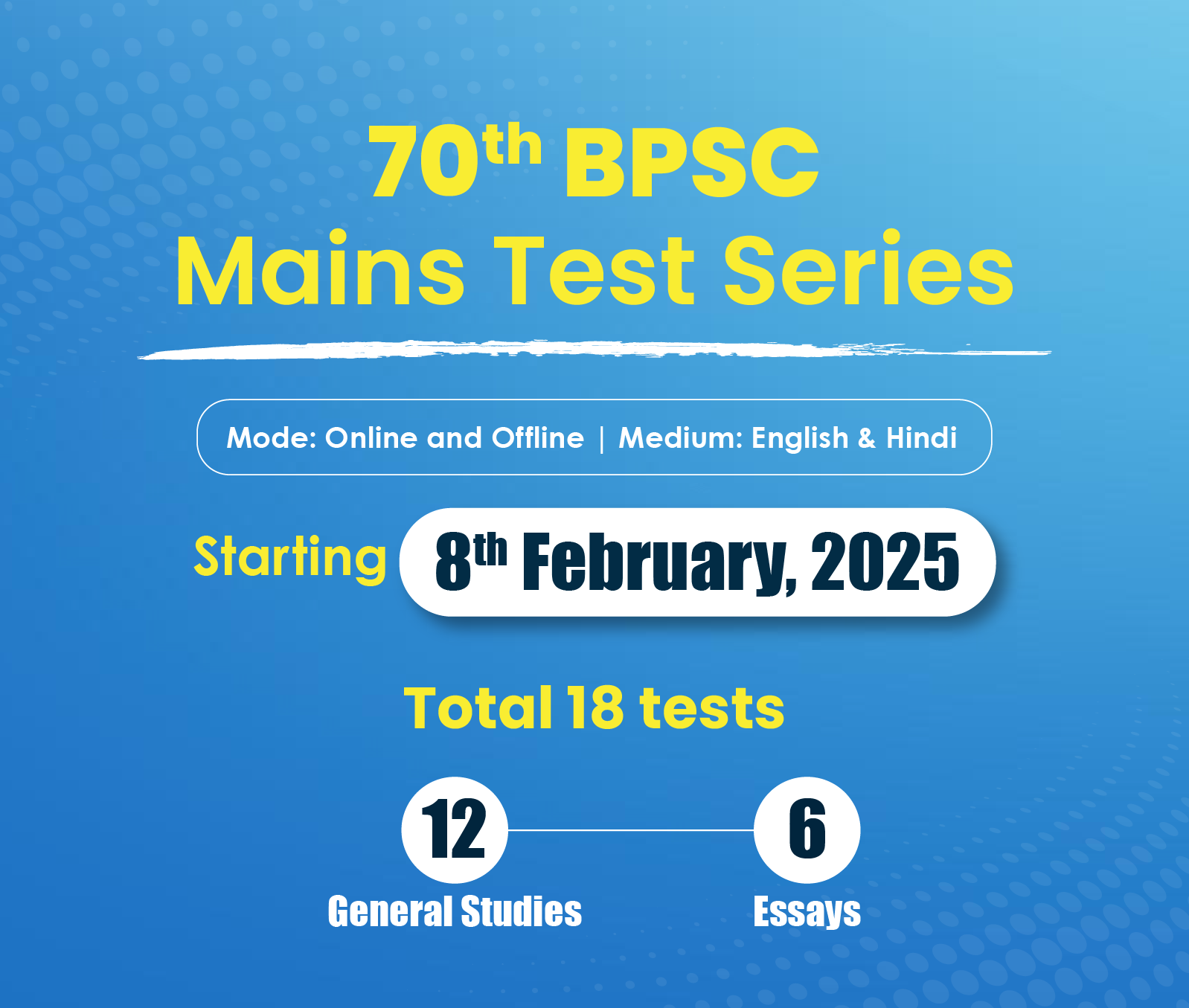

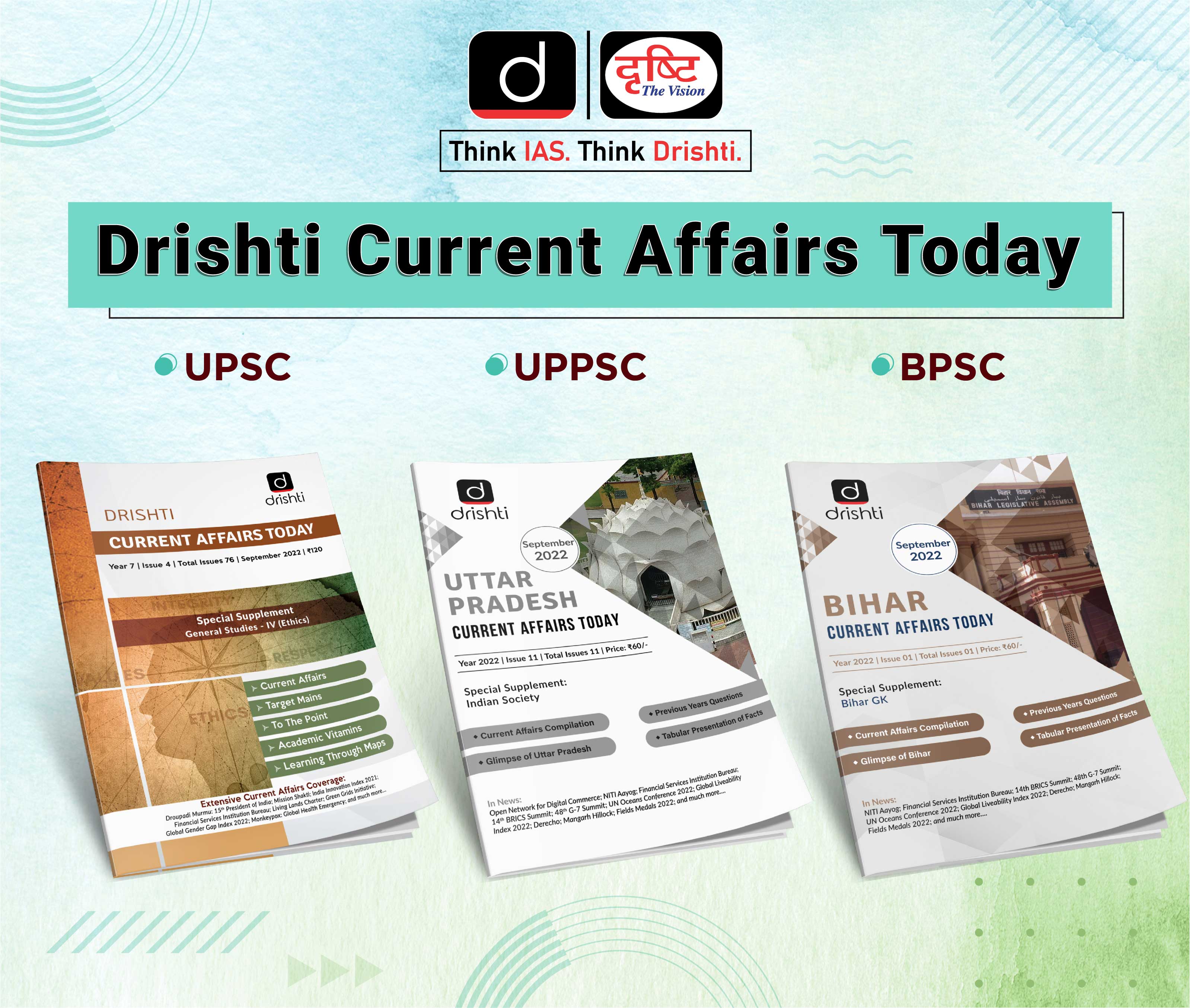

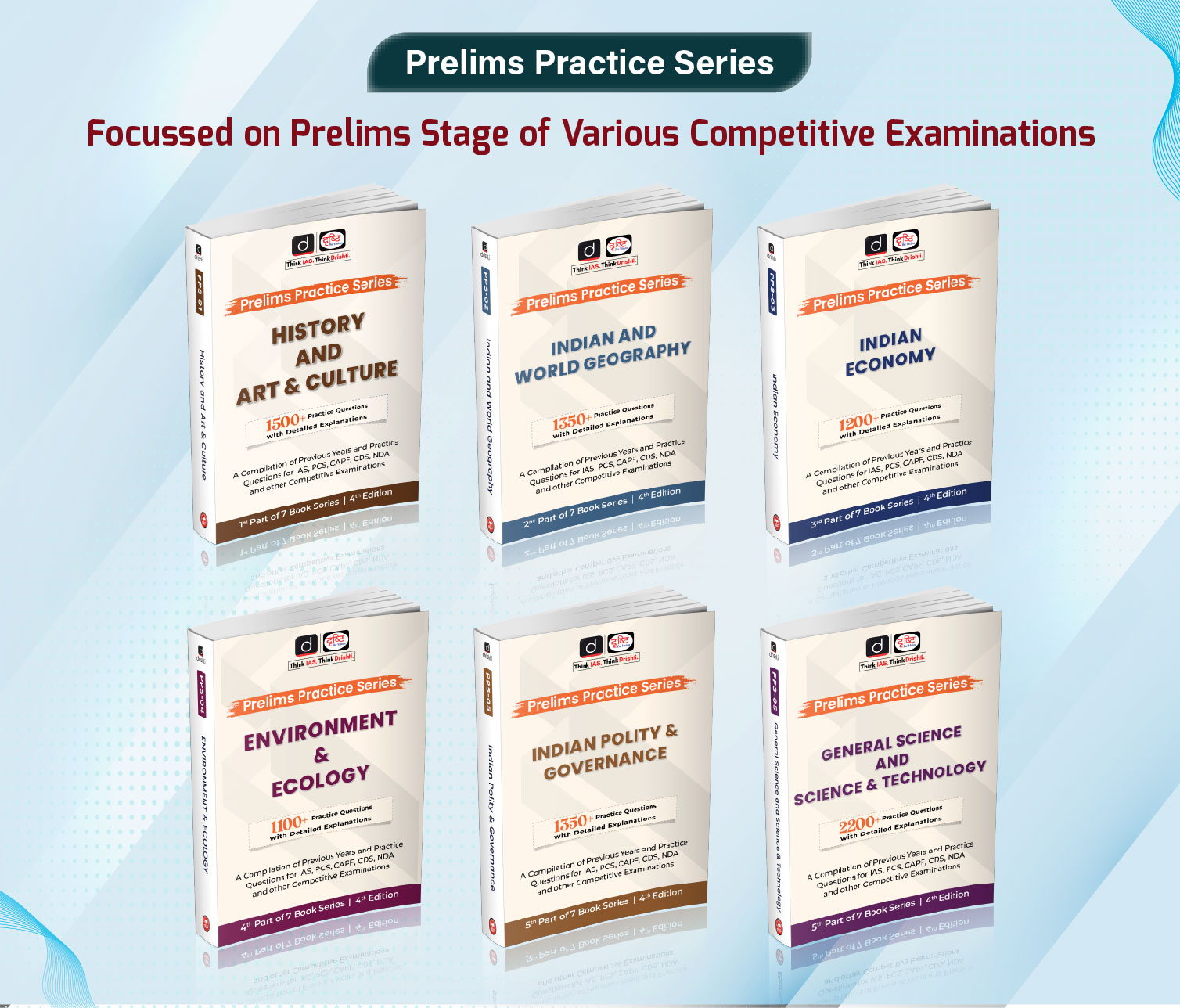

 PCS Parikshan
PCS Parikshan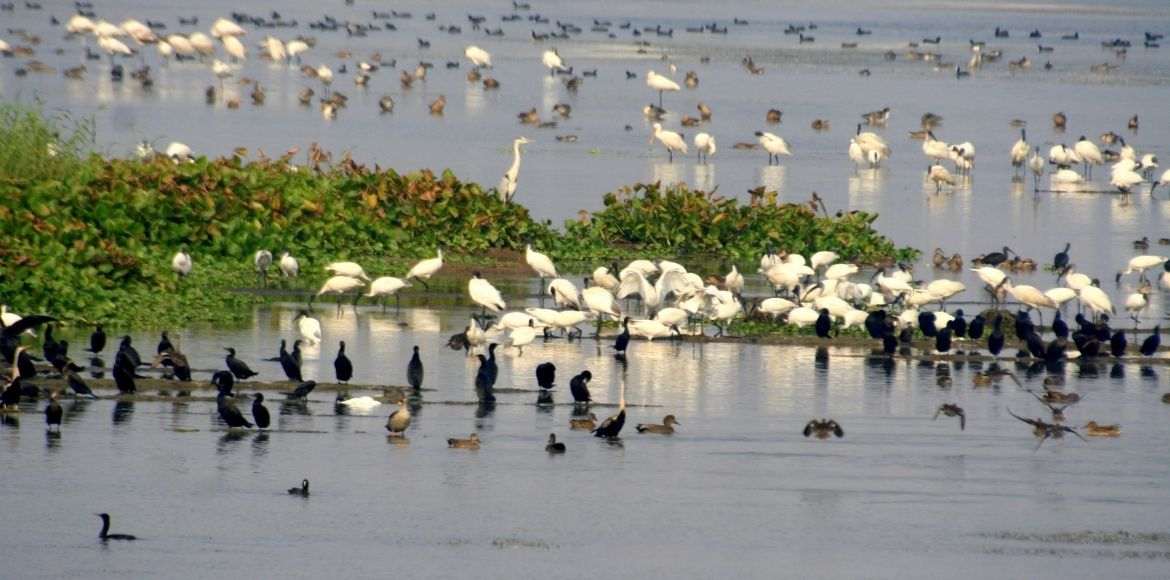
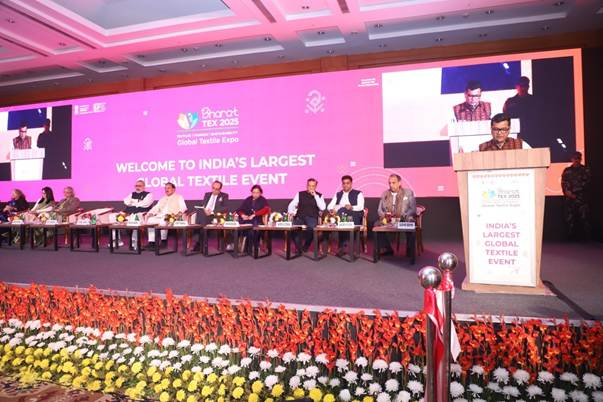
 (1).jpg)
 (1).jpg)


